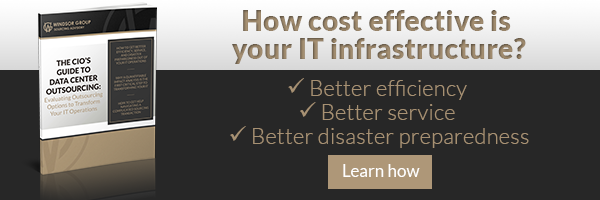 An IT service assessment is supposed to look like a finely-wrought portrait of your enterprise, from an IT point of view, of course. You can no longer separate “IT” from the overall context of your organization, because the services you deliver to internal and external customers represent your company’s lifeblood – your ability to function smoothly and to nimbly ride the waves of today’s highly fluid business environment.
An IT service assessment is supposed to look like a finely-wrought portrait of your enterprise, from an IT point of view, of course. You can no longer separate “IT” from the overall context of your organization, because the services you deliver to internal and external customers represent your company’s lifeblood – your ability to function smoothly and to nimbly ride the waves of today’s highly fluid business environment.
That fluidity is the reason an IT service assessment has to be more than a snapshot. It has to be about patterns and preparedness. Just because certain services or levels of service are top priorities now, doesn’t necessarily indicate how well they’ll serve you in the future.
So what does that mean?
You need an entire palette of data to paint your assessment portrait.
What services are currently being delivered, by your internal IT infrastructure and staff or sourced elsewhere? How are they being delivered – via what processes and technologies? And what are the costs associated with all that? Taking a holistic approach to IT service assessment is the only way to create a sound baseline you can use to make decisions.
Especially with hybrid solutions dominating the strategic thinking of today’s most up-to-date CIOs, you can’t identify your company’s ideal mix without understanding clearly where you’ll see greatest benefit. The best IT solutions don’t just plug holes or shore up fading legacy systems, they should give you the power of flexibility and the capability to wholly transform the way your enterprise transacts business at the most elemental levels.
It’s also no longer solely about reducing costs, though getting the best bang for your investment is always desirable. It’s cost-effectiveness that ensures you’re spending wisely. And what’s most effective for your overall enterprise business and financial requirements will be a unique configuration of solutions.
Costs come in different guises.
An IT service assessment has to take into account all shades of expense in order to give you a true picture of your current situation:
-
Direct, obvious expenses you can easily identify within the IT lines of your corporate budget.
-
Direct costs such as labor or overhead that may be “hidden” in other departmental budget sections.
-
Indirect costs relating to depreciation, amortization, contracts-in-progress, etc.
-
Indirect intangibles surrounding your corporate culture and your people – concerns about job security, willingness to embrace significant change, desire to do business with only local or regional sourcing partners, etc.
You need to know your true per-unit costs for service delivery, but any decisions you make regarding change have to consider the human side of the equation, too. That includes issues such as customer and employee satisfaction, which can drive greater productivity and sales or have a chilling effect on your ability to compete. And you’ll need to consider your company’s compliance and risk management requirements.
Now you’ve built a service profile.
You have your full-color IT service assessment that includes the baseline output and costs you’ve identified, projected output needs and costs and your current organizational chart. Now you can identify potential alternatives and accurately compare the cost-benefit of each. Ask yourself:
-
What will give us greatest agility?
-
What can we automate? Or automate more?
-
What can we consolidate?
-
How can we streamline processes or shift workloads to alleviate sharp usage fluctuations?
-
What must be retained in-house?
Your IT service assessment is looking good. It points you toward a service delivery strategy for the future that will keep your enterprise functional and flexible in the face of unforeseeable change and support your long-term business goals, wherever they take you.
You might say it’s a work of art.
Photo Credit: @KateParker via Flickr


